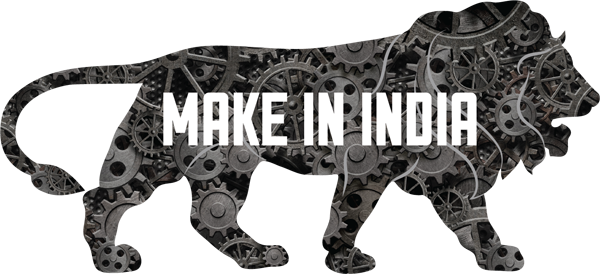
Donald Trump’s campaign slogan while fighting the American presidential elections, was to ‘Make America Great Again’. On March 1, 2018, a little over a year after taking over as the 45th president of the United States, Trump announced a 25% tariff on steel and a 10% tariff on aluminium.
The question is, how does this fit into Trump’s plan to make America great again? Trump plans to drive up exports and drive down imports. By driving down imports through tariffs, the American consumer will be forced to buy stuff produced within the country. This will encourage domestic industry and in turn create jobs. By driving up exports, again domestic industry will be encouraged and this will create jobs. QED.
Now only if it was as simple as that. The trouble is that most politicians while making economic decisions look at only the first order effects of their decisions. In the current case this basically means that the steel tariff of 25%, will also allow the American domestic steel industry to compete.
As of now the American steel industry cannot compete simply because it cannot produce steel at a price at which steel can be imported into the United States. The tariff of 25% will make imported steel costlier and in the process allow American steel companies to compete. And this will create jobs. At least that is what Trump and his advisers who have helped him to arrive at this decision, hope for.
This is the first order effect of Trump’s decision which looks just at the impact of the tariff on the American steel producers. As Henry Hazlitt writes in Economics in One Lesson: “Those who favour it [i.e. tariffs] think only of the interests of the producers immediately benefitted by the particular duties involved. They forget the interests of the consumers who are immediately injured by being forced to pay these duties.”
Hazlitt is talking about the first order effect of Trump’s decision which benefits American steel companies and the second order effect of Trump’s decision which hurts American companies consuming steel.
Steel (either imported or produced in America) is bought by other American companies. It is used as a major component while making buildings, tools, ships, automobiles, machines, appliances, and weapons. Other than weapons, the United States cannot do without the other things listed in the last sentence.
On second thought, given the American obsession with guns, neither can the country do without weapons.
Steel is also used as a major input into building physical infrastructure.
While the tariff on steel will make American steel producers viable, it will make steel more expensive for American steel consumers, as they will have to pay more for steel. This increase in cost will be passed on to the end consumers. So, everything from cars to appliances to homes will cost more. The end consumer only has so much money going around. Hence, he or she may not buy the stuff he has been planning to, due to higher prices. If he does so, his expenses will have to increase or he will have to balance his overall expenses, by cutting down on his other expenditure.
As Hazlitt writes: “The added amount which consumers pay for a tariff protected article leaves them just that much less with which to buy all other articles. There is no net gain to industry as a whole.” This is a very basic point which politicians encouraging any sort of protectionism don’t seem to get.
The tariffs will impact the overall sales of other American businesses, which might in turn fire people to maintain their profitability. It’s just that it is not possible to exactly quantify these job losses and loss of business.
As Hazlitt writes: “It would be impossible for even the cleverest statistician to know precisely what the incidence of the loss of other jobs had been—precisely how many men and women had been laid off from each particular industry, precisely how much business each particular industry had lost—because consumer had to pay more [for steel in this case].”
The news agency Reuters has a story on how 780 workers of the Novolipetsk Steel will lose their jobs. The company imports two million tonnes of steel slabs per year from its Russian parent company. It then rolls these slabs into sheets for various American companies, ranging from Home Depot to Harley Davidson to Caterpillar.
The customers of this steel company now need to be ready to accept a 25% increase in the price of steel. If they do, the company survives. If they don’t, then the company will have to start firing workers. This is the second order effect of a tariff, which is not very clear up front.
If these companies accept a 25% increase it will only be in a situation where they can’t source the steel they need from a cheaper source. Further, it will lead to a rise in the price of their end product, depending on what proportion steel forms of their total inputs.
Also, it is worth remembering here, that if America can impose tariffs on its imports, other countries can do the same on their imports, hurting American exports. In fact, this is precisely how things played out in the aftermath of the First World War, when America tried to protect its domestic industry through tariffs. In return, other countries imposed tariffs on their imports and this led to the start of the global trade war, hurting American exports.
Hence, driving down imports, while trying to drive up exports, is sort of contradictory. There are many other aspects to this, which we shall see in tomorrow’s column.
The Economist estimates that steel and aluminium accounted for around 2% of the total American imports of $2.4 trillion, last year. This formed around 0.2% of the American GDP. Given this, currently the level of protectionism unleashed by the American president is very small. But the level of rhetoric that Donald Trump has unleashed around the issue, it doesn’t seem that he is going to stop just at this. This also becomes clear from the fact that on March 6, 2018, Gary Cohn, the chief economic adviser of Trump, quit.
We will return to this discussion in tomorrow’s column.
The column originally appeared on Equitymaster on March 12, 2018.




